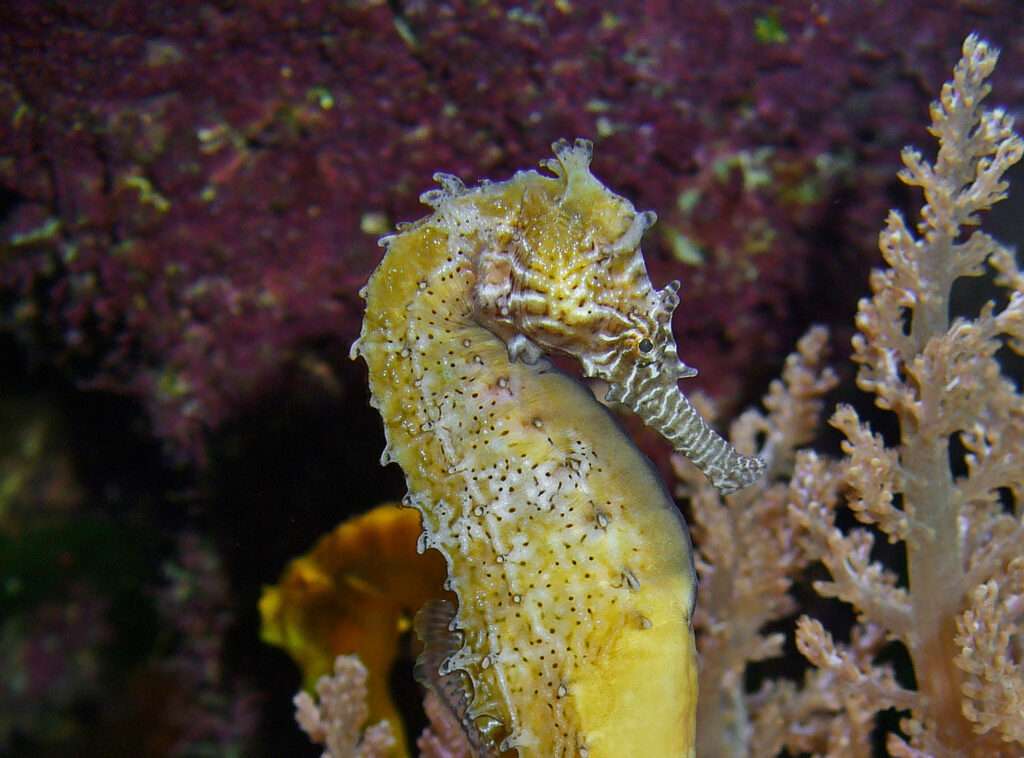
It is non-migratory and found in subtropical marine environments in depths of 4 to 12 meters. In areas along the shore that are just 5 m deep and comprise coarse sand as well as Zostera and Halophila sea grasses, Hippocampus colemani can be found. The skins of seahorses are covered in tiny filamentous algae from the leaves of seagrass, which serves as a kind of camouflage.
The largest documented length for a member of this species is only 2.7 centimeters (1.1 in). They feature thin trunks, low coronets, small heads, short snouts, and short snouts. The main coloration ranges from pale whitish to yellowish, with brownish-red appendages, a somewhat brownish tail, and white circular or elliptical markings on the trunk that are edged with thin red lines. Due to its minuscule size and outstanding concealment, H. Since it was found at Lord Howe Island in 2003, H. colemani has largely gone unreported . The population size of this species has not been determined through surveys or estimates. Four specimens and some photos from a few different occasions are all that are known about the species. H. colemani appears to be a rare species.
Although there are no known direct dangers to this species, its habitat, the seagrass, is being lost and degraded on a global scale. Within the range of the species, more local information is required on seagrass habitat trends and sea filling, a problem that is now present in some places of Southeast Asia. Pygmy seahorses are less likely to be caught by bycatch than their larger congeneric, hence it is unknown how much of this species is traded. The species’ absence from the aquarium commerce is known. No specific conservation measures are presently being made to protect Hippocampus colemani. The species’ type locality is protected, and parts of its distribution may also be found in other protected areas.

Appearance
A small, pale yellowish seahorse with brownish-red dermal appendages, a tail that is slightly more brownish with red markings, and white circular or elliptical markings on the trunk. It also has multiple dusky brown bands radiating from its eye.
Habitat
Hippocampus colemani is still present in the Milne Bay region of Papua New Guinea, the Ryukyu Islands of Japan, Lord Howe Island, and New South Wales in Australia. It inhabits coarse sand and the sea grasses Zostera and Halophila at depths of about 5 meters (16 ft).
Reproduction
Ovoviviparous describes them. In sand bottoms with scant Zostera and Halophilia, the male carries the eggs under the tail between 4 and 12 meters deep in a brood pouch.
Diet
It is expected that it would consume microscopic crustaceans for food, just like other seahorses do. In ovoviviparous reproduction, males are expected to care for eggs in a pouch before giving birth to live offspring.
Table





